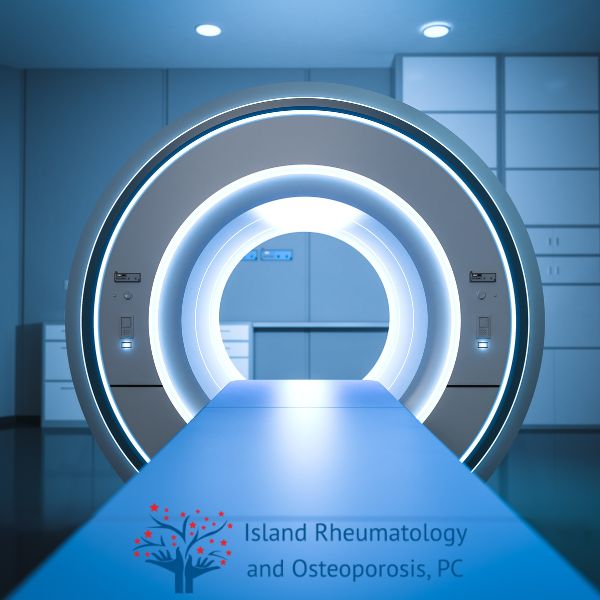
12 May The Latest Advances in Rheumatology Treatments
Rheumatology has always been a field defined by its complexity, with a wide range of diseases and disorders that affect the joints, muscles, and bones. In recent years, there have been significant advances in the treatment of rheumatic diseases, offering hope to millions of patients around the world. From groundbreaking biologics to innovative diagnostic tools, these advances are transforming the way we understand and manage these conditions.
1. Biologic Therapies
One of the most significant advancements in rheumatology has been the development and use of biologic therapies. These are drugs derived from living organisms that target specific components of the immune system. Biologics have revolutionized the treatment of autoimmune diseases such as rheumatoid arthritis (RA), psoriatic arthritis, and ankylosing spondylitis.
Biologics work by inhibiting the activity of certain proteins or cells that play a key role in the inflammatory process. Tumor necrosis factor (TNF) inhibitors, such as adalimumab and infliximab, were among the first biologics to be used in rheumatology. Since then, other biologics targeting different pathways, including interleukin (IL)-1, IL-6, and IL-17, have been developed. These drugs have been shown to reduce symptoms, prevent joint damage, and improve quality of life for many patients.
2. Janus Kinase (JAK) Inhibitors
Janus kinase (JAK) inhibitors are another class of medications that have made a significant impact on the treatment of rheumatic diseases. JAK inhibitors work by blocking the activity of enzymes called Janus kinases, which are involved in the signaling pathways that contribute to inflammation and immune response.
Tofacitinib and baricitinib are two JAK inhibitors that have been approved for the treatment of rheumatoid arthritis. These drugs have shown promise in reducing symptoms and slowing disease progression, offering an alternative to patients who do not respond to traditional biologic therapies. JAK inhibitors are also being explored for use in other rheumatic conditions, such as psoriatic arthritis and ankylosing spondylitis.
3. Personalized Medicine
Personalized medicine is an emerging approach that tailors treatment to an individual’s unique genetic, environmental, and lifestyle factors. In rheumatology, personalized medicine involves using biomarkers to predict how a patient will respond to a particular treatment. This approach allows for more targeted and effective therapies, reducing the trial-and-error process that can be frustrating for both patients and clinicians.
For example, researchers are investigating the use of genetic markers to identify patients with rheumatoid arthritis who are more likely to respond to certain biologics or JAK inhibitors. By understanding a patient’s genetic profile, clinicians can prescribe the most appropriate treatment from the outset, leading to better outcomes and fewer side effects.
4. Advanced Imaging Techniques
Advanced imaging techniques have also played a crucial role in the diagnosis and management of rheumatic diseases. Traditional imaging methods, such as X-rays and magnetic resonance imaging (MRI), are still widely used. However, newer techniques, such as ultrasound and positron emission tomography (PET), offer more detailed and accurate assessments of joint and tissue inflammation.
Ultrasound is particularly useful for detecting early signs of joint inflammation and damage, allowing for timely intervention. PET scans, on the other hand, can provide valuable information about metabolic activity and inflammation in the body, helping to monitor disease progression and response to treatment.
5. Telemedicine and Digital Health
The COVID-19 pandemic has accelerated the adoption of telemedicine and digital health tools in rheumatology. Telemedicine allows patients to consult with their rheumatologists remotely, reducing the need for in-person visits and increasing access to care, especially for those living in remote areas. Digital health tools, such as mobile apps and wearable devices, enable patients to track their symptoms, medication adherence, and physical activity, providing valuable data to their healthcare providers.
These technologies have the potential to improve disease management, enhance patient engagement, and facilitate research by collecting real-world data on rheumatic diseases.
6. Stem Cell Therapy and Regenerative Medicine
Stem cell therapy and regenerative medicine are promising areas of research in rheumatology. These approaches aim to repair or replace damaged tissues and promote healing in conditions such as osteoarthritis and rheumatoid arthritis.
Mesenchymal stem cells (MSCs) are a type of stem cell that can differentiate into various cell types, including bone, cartilage, and muscle cells. Researchers are exploring the use of MSCs to regenerate damaged joint tissues and reduce inflammation. While still in the experimental stage, early studies have shown encouraging results, suggesting that stem cell therapy could become a viable treatment option in the future.
Contact Us
The field of rheumatology is rapidly evolving, with exciting advancements that offer new hope to patients with rheumatic diseases. Biologic therapies, JAK inhibitors, personalized medicine, advanced imaging techniques, telemedicine, and regenerative medicine are just a few of the latest developments that are transforming the way we diagnose and treat these conditions. As research continues, it is likely that even more innovative treatments will emerge, improving the quality of life for millions of people living with rheumatic diseases.

